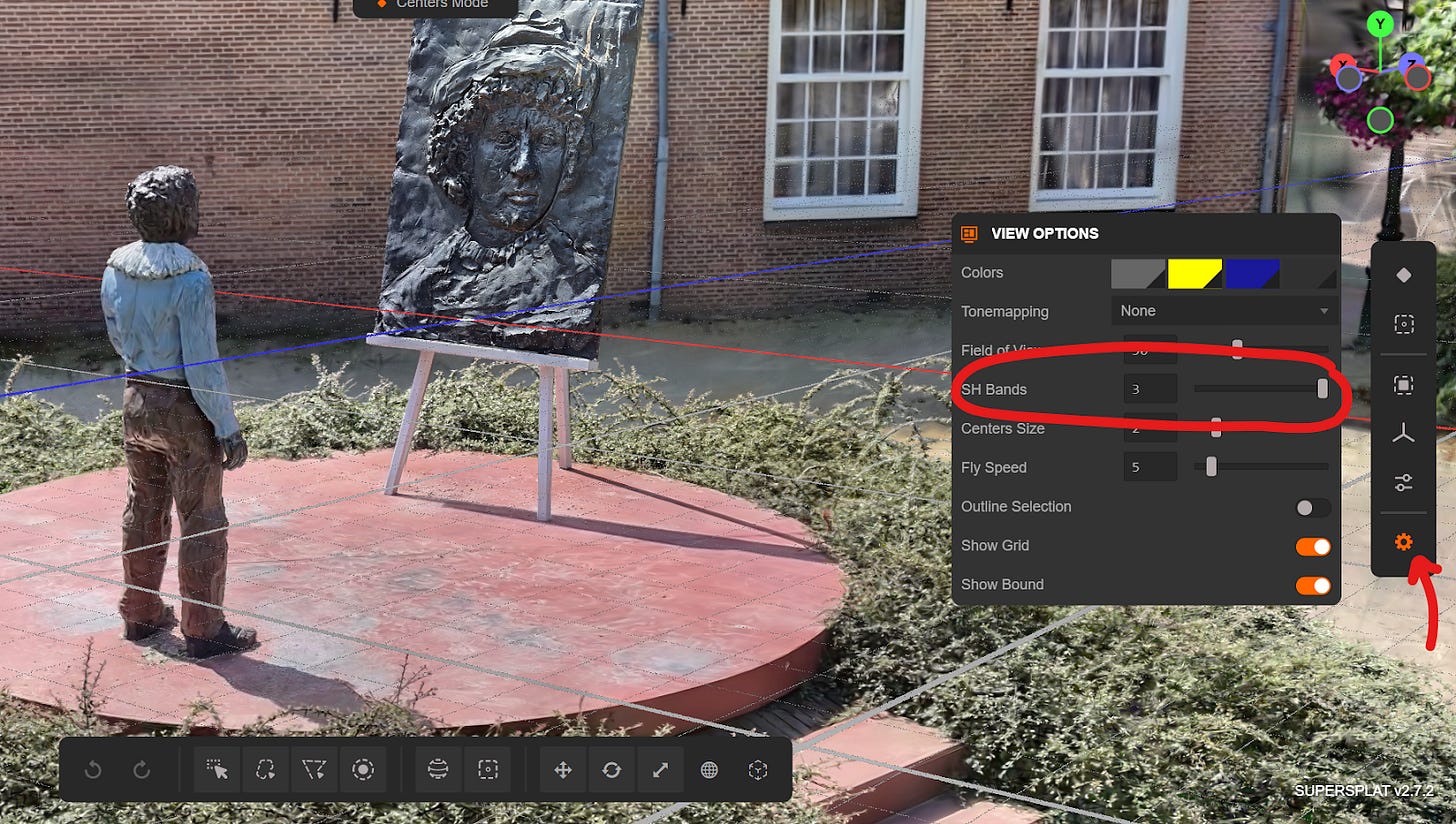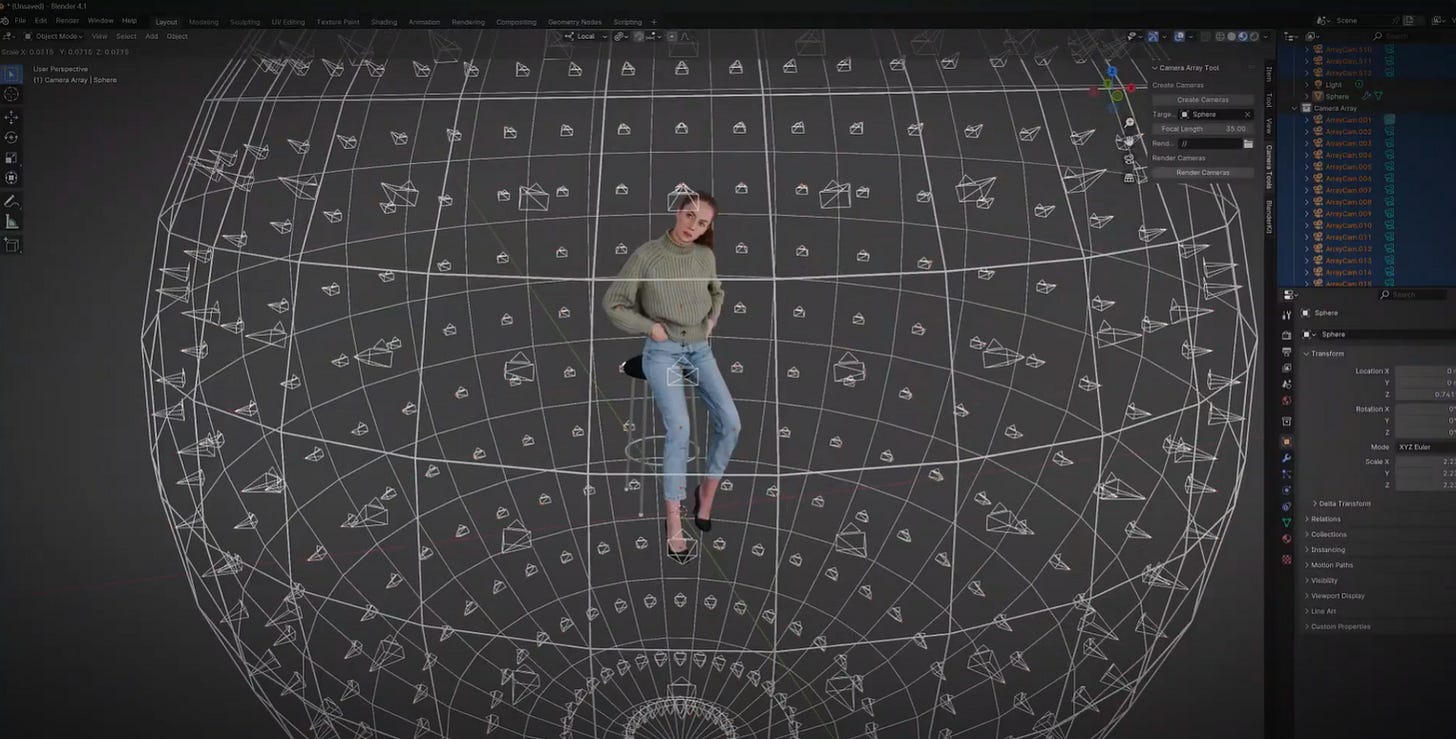Tools, Workflows, and Optimizations for Gaussian Splatting
Today, we sit down with Olli Huttunen, a creative technologist and leading voice in Gaussian Splatting, curating one of the best YouTube channels on 3DGS out there. We explore how PostShot revolutionises 3D workflows, the technical tricks to reduce file sizes, the rise of synthetic splats, and what it takes to bring these visuals into AR and VR.
Before getting into the interview, I wanted to quickly introduce you to today’s sponsor Gracia AI. Gracia AI is the only app that allows you to experience Gaussian Splatting volumetric videos on a standalone headset, either in VR or MR.
It is a truly impressive experience and I recommend you to try it out right now on your Quest or PC-powered headset.
Interview with Olli Huttunen
What is your favourite tool to create Gaussian Splatting?
Olli Huttunen: Recently, I've been using PostShot the most. It's a local Gaussian training program that works great on Windows with Nvidia GPUs. I really appreciate how much control it gives me. Luma, on the other hand, used to be great for online Gaussian generation but they’ve shifted their focus more to AI video tools. Polycam is decent, and I also found Kiri Engine really promising. It's great that more tools are emerging; more choice means faster evolution in this space (for an in-depth comparison of the top 5 tools to create Gaussian Splatting check out this video I made below).
What kind of hardware do you need to run something like PostShot effectively?
Olli Huttunen: You really just need a decent Nvidia GPU. I’m running PostShot on an RTX 3070 with 8GB VRAM and it handles everything smoothly. Even older cards like the RTX 2060 can run it. The developers have done an amazing job optimizing the code. I think this accessibility is a huge plus, anyone with a mid-range setup can get into high-quality 3D Gaussian splatting without needing a monster rig.
You’ve mentioned PostShot gives you more control than cloud tools. Can you give us a concrete example?
Olli Huttunen: Sure. In PostShot, you can tweak how many Gaussians get generated and even choose between three training profiles: ADC, MCMC, and the new Splat 3. Each has its own behaviour. For example, MCMC starts outside-in and is a bit chaotic, leaving hidden splats that bulk up your file size. ADC and Splat 3 are more efficient. You also get to decide how many camera views and images you feed into the training, which hugely impacts quality and size.
File sizes are a big issue in Gaussian splatting. What are your best tips to keep them low?
Olli Huttunen: It starts with your inputs. Use only the necessary number of images and drop blurry or redundant ones. PostShot even lets you feed in video, and it’ll pick the best frames for training. That’s a big time-saver. After training, you can crop unnecessary parts of the model, like background splats if you’re only interested in an object. For environmental scans, clean up floating artefacts, especially if you used MCMC, which tends to leave more of those.
Once your model is trained, what other methods help with optimizing or cleaning it up?
Olli Huttunen: After training, tools like PostShot and SuperSplat are key. You can paint over and remove unwanted splats, trim backgrounds, and isolate objects. SuperSplat is especially useful for this. It’s browser-based and has become quite versatile. I often tell people to use it when they need a quick way to optimize or crop models for web use or lightweight applications.
Is there a way to compress these models further without sacrificing too much quality?
Olli Huttunen: Yes, Niantic created a new open format called SPZ to compress splats better. It’s mostly used in their Scaniverse app for now, but hopefully more tools adopt it. Also, a big chunk of the file size comes from spherical harmonics layers that give lighting and shading data. Removing some of these can drastically reduce size. You lose some visual fidelity, but in many real-world scans, you won’t even notice the difference.
Can you selectively remove parts of the spherical harmonics data?
Olli Huttunen: Absolutely. In SuperSplat, you can choose how many SI bands to keep when exporting. Dropping from three to two layers already gives you a lighter file while still looking pretty good. PostShot saves the full data by default, but you can preview what the model looks like without those layers before deciding to export or tweak anything.
You’ve developed a Blender add-on for synthetic Gaussian Splatting. What does it do?
Olli Huttunen: It’s a camera array tool that lets you set up a virtual capture rig inside Blender, like a digital version of a real camera cage. You can render images from all those virtual cameras and use them as your dataset for Gaussian Splatting. It’s convenient for turning 3D models into splats, even though that might seem unnecessary. The benefit is that once rendered, splats load and render in real time, even in browsers, which is awesome for games and interactive experiences.
What’s the advantage of turning a 3D model into a Gaussian splat?
Olli Huttunen: The big win is real-time performance. Complex models with fur, hair, or transparency are heavy to render in 3D engines. But once they’re turned into splats, you can view them in high quality with almost no delay. You’re doing the heavy lifting once and then enjoying lightweight performance forever. It’s especially helpful for showing off intricate models without tanking your frame rate.
Who’s using your Camera array tool, and how are they using it?
Olli Huttunen: It’s a mix. Some are hobbyists and Blender users experimenting with splats. Others are game studios looking for real-time optimization. A few creatives are even using it to generate training data for AI. They’ll render variations of a simple model, feed that into AI, and get back something way more complex. It’s cool to see people use the tool in ways I hadn’t expected.
You mentioned something called “Gaussian propagation.” What is that exactly?
Olli Huttunen: I noticed during training that when you hit play on the timeline in PostShot, the viewport starts refreshing more often. The Gaussians begin to “wobble” and dynamically move into place—it looks almost alive. Every 100 iterations or so, there’s this visual pulse, like a heartbeat. I started experimenting with that, and you can make Gaussians grow or propagate from certain areas by manipulating the sparse point cloud. It’s very artistic and almost feels organic.
What’s missing to make Gaussian splatting more mainstream in AR and VR?
Olli Huttunen: First, we need better compression. File sizes are still a bottleneck. Second, we need standards, ideally keeping it all in PLY so we don’t splinter into too many formats. And third, better viewers. Tools like SuperSplat are great, but they’re still early. For VR, I’d love to see smoother integration with devices like Quest 3 and Vision Pro. We’re getting there, but we need simpler, more reliable pipelines for creators and users alike.
Do not forget to check out the full interview on your favourite platform 👇
That’s it for today
See you next week





